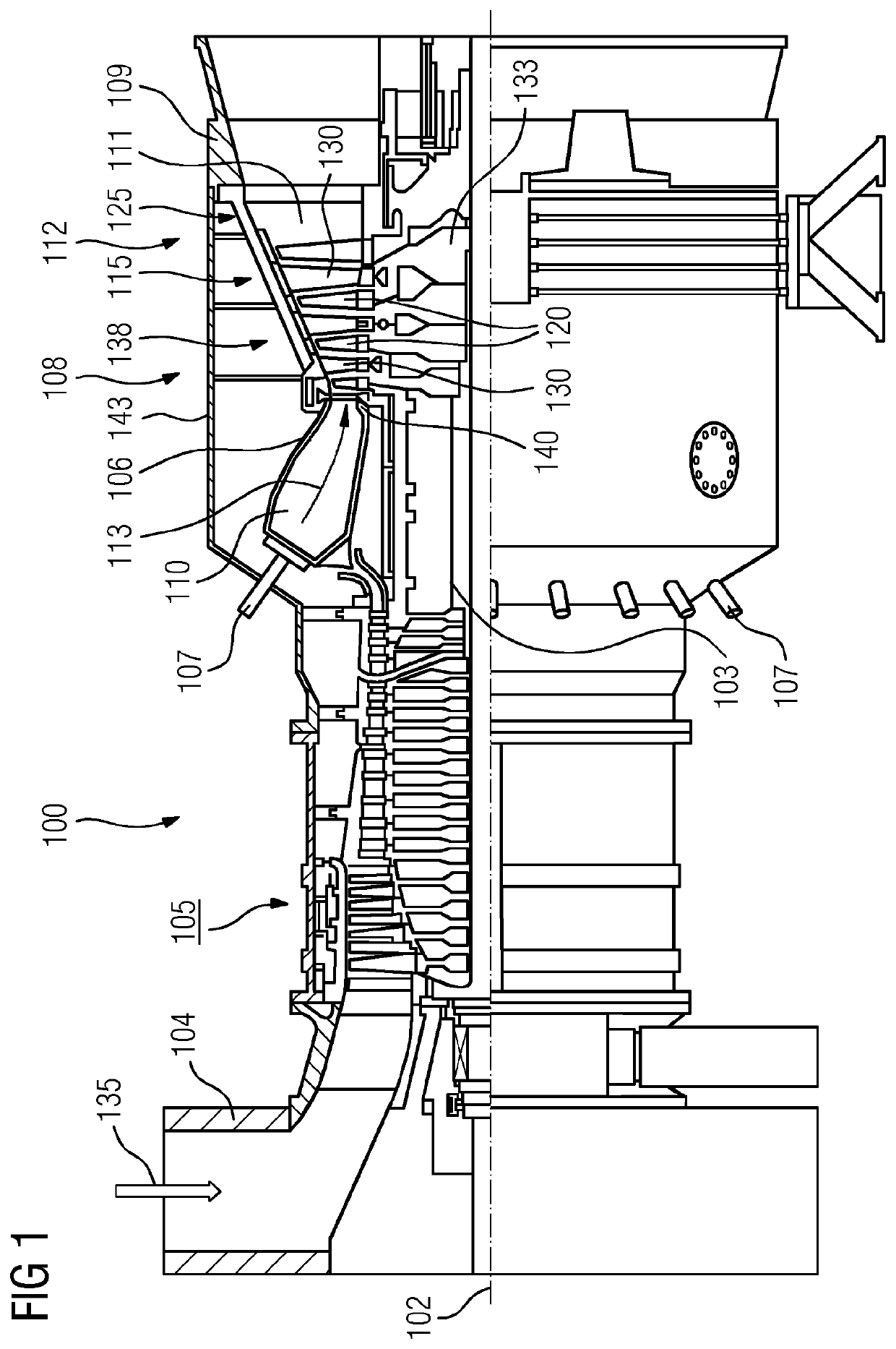Method for producing a rotor blade
a rotor blade and rotor blade technology, which is applied in the direction of turbines, efficient propulsion technologies, machines/engines, etc., can solve the problems of difficult to achieve a wall thickness of 1 mm, complex geometries can be produced in the interior of the blade, and the known 3-d printing method can achieve the reduction of component strength, improve the efficiency and power of gas turbines, and reduce the thickness of the blade airfoil
- Summary
- Abstract
- Description
- Claims
- Application Information
AI Technical Summary
Benefits of technology
Problems solved by technology
Method used
Image
Examples
Embodiment Construction
[0027]In all the figures, identical parts are provided with the same reference signs.
[0028]FIG. 1 shows a gas turbine 100 in a partial longitudinal section. A turbine is a continuous flow machine which converts the internal energy (enthalpy) of a flowing fluid (liquid or gas) into rotational energy and ultimately into mechanical driving energy.
[0029]In the interior, the gas turbine 100 has a rotor 103, which is mounted so as to rotate about an axis of rotation 102 (axial direction) and which is also referred to as a turbine rotor. Situated one after the other along the rotor 103 are an intake casing 104, a compressor 105, a toroidal combustion chamber 110, in particular an annular combustion chamber 106, having a plurality of coaxially arranged burners 107, a turbine 108 and the exhaust casing 109.
[0030]The annular combustion chamber 106 communicates with an annular hot gas duct 111. There, four turbine stages 112 arranged in series, for example, form the turbine 108. Each turbine s...
PUM
| Property | Measurement | Unit |
|---|---|---|
| thickness | aaaaa | aaaaa |
| energy | aaaaa | aaaaa |
| rotational energy | aaaaa | aaaaa |
Abstract
Description
Claims
Application Information
 Login to View More
Login to View More - R&D
- Intellectual Property
- Life Sciences
- Materials
- Tech Scout
- Unparalleled Data Quality
- Higher Quality Content
- 60% Fewer Hallucinations
Browse by: Latest US Patents, China's latest patents, Technical Efficacy Thesaurus, Application Domain, Technology Topic, Popular Technical Reports.
© 2025 PatSnap. All rights reserved.Legal|Privacy policy|Modern Slavery Act Transparency Statement|Sitemap|About US| Contact US: help@patsnap.com



